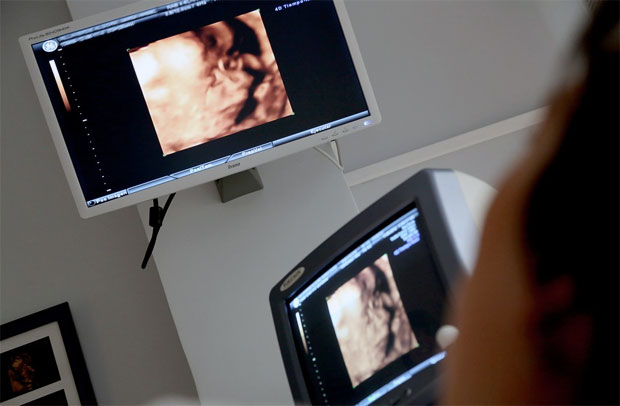What You Need to Know About Pregnancy Ultrasound Scans

What You Need to Know About Pregnancy Ultrasound Scans
One of the many things that will be part of a pregnant woman’s journey is ultrasound screenings. For expecting mothers, an ultrasound can be an exciting appointment, as it gives you a glimpse of how your baby is doing and even what he or she already looks like from inside the womb!
There are multiple occasions when your doctor or midwife may request for an ultrasound. For first-time mums, getting an ultrasound, or any test at that, can be a cause for anxiety, especially if you are clueless about what to expect during the procedure. Before anything else, it is best to be well-informed to keep your mind at peace throughout your pregnancy.
- How Ultrasound Works
An ultrasound scan works by sending sound waves through the uterus, which bounce off the fetus as echoes to form an image on the ultrasound monitor. For pregnant women, an ultrasound helps in displaying your baby’s position and monitor his or her movements.
During your first-trimester scan, you may find it hard to picture out your baby from the ultrasound image, especially if you are still just a few weeks in your pregnancy. However, it is good to note that hard tissues, like bones, appear white as they make the biggest echoes, while soft tissues show gray. Meanwhile, the amniotic fluid that surrounds the baby will appear black on the image as sound waves just go through them and make no echoes.
- Your First Ultrasound
Your first ultrasound can take place during your sixth or eighth week of pregnancy. During this stage, your baby is still very small, so an abdominal ultrasound exam may not show a clear picture of him or her yet. In order to successfully confirm your pregnancy through ultrasound at this early stage, your ob-gyn might conduct the procedure transvaginally, which is an invasive yet actually painless method of the test.
During the scan, your ob-gyn will insert a wand-like ultrasound transducer probe into your vagina, and this probe transmits the high-frequency waves through your womb. The ultrasound machine will then convert the waves into a black-and-white picture of your tiny tot.
Don’t get frustrated if your first snapshot of your baby isn’t as clear as you expect it to be. A clearer photo can be obtained once you are around thirteen weeks pregnant!
The first ultrasound in your pregnancy intends not only for you to take a shot of your baby but also for you to listen to his or her heartbeat and estimate the baby’s age based on his or her measurements. Such data is important to help your doctor to accurately keep track of your pregnancy milestones from thereon. Here in the UK, the first ultrasound usually takes place around 12 weeks and at that time you wouldn’t need a transvaginal scan.
- When to Expect Another Scan
Your doctor may request for another ultrasound scan in your second and third trimesters for a couple of reasons. Also known as a sonogram, an ultrasound is usually recommended to help your health-care provider keep track of your baby’s growth and to determine his or her position inside the uterus — whether it is cephalic, breech, or transverse.
During your second trimester, an ultrasound scan can also be done to determine the baby’s sex, which is usually an exciting moment for everyone.
However, your doctor may also request for an ultrasound to determine any abnormalities in your pregnancy or with your baby, such as birth defects, blood-flow problems, placenta previa and placental abruption, and whether your baby is getting enough oxygen or not. This detailed ultrasound scan is sometimes called the mid-pregnancy or 20-week scan and is usually carried out when you’re around 20 weeks pregnant.
- Preparing for an Ultrasound
Prior to the scan, you may be asked to drink lot of fluids to have a full bladder. This will help the technician or your ob-gyn to get a clearer image of your baby and your reproductive organs.
Once you’re ready, you will then be asked to lie down so the technician can get better access to your abdomen. A special gel is applied across your belly and pelvic area, which is essential in getting the sound waves to travel properly.
Unlike a transvaginal scan, wherein the ultrasound transducer is placed in the vagina, an abdominal ultrasound scan only requires the transducer to be placed onto your belly, being probed through the area to effectively capture the image onto the monitor. During this time, the technician can already take measurements of the fetus using the image on the screen.
Once this is done, the gel is wiped off your belly, and you may then receive a copy of your scan. Some hospitals charge a small fee for these images.
- Is It Safe?
An ultrasound examination is unlikely to bring a developing fetus any lasting harm, even if it is done multiple times. Such test has been widely accepted as safe for mothers and their babies throughout the years, and many studies have already backed up this notion.
Also, an ultrasound is even a great form of preventive prenatal care as it monitors your child’s health, allowing your doctor to intervene as early as possible if a problem is detected.
If you have an upcoming ultrasound appointment with your ob-gyn or your nearby diagnostic clinic, there’s no need to fret. It’s better to enjoy another moment that you get to see your little one again, even if it’s still through a black-and-white screen!
Guest Article. Contains a sponsored link.




